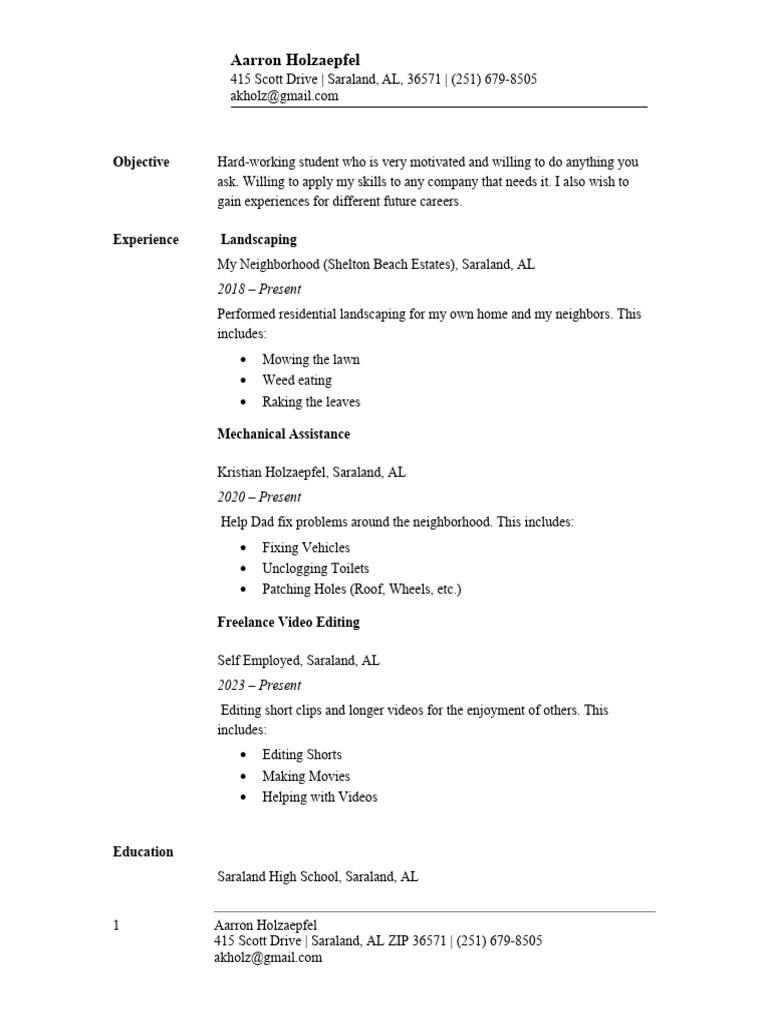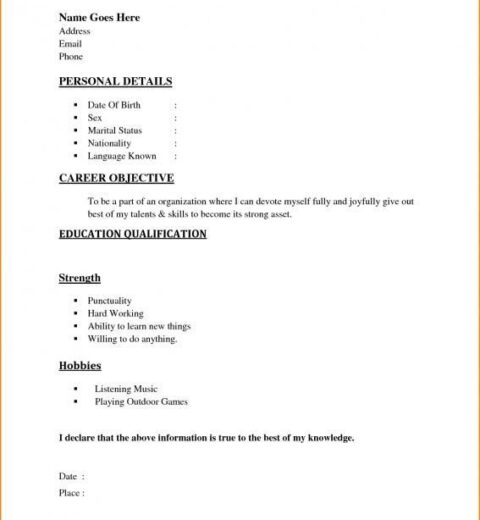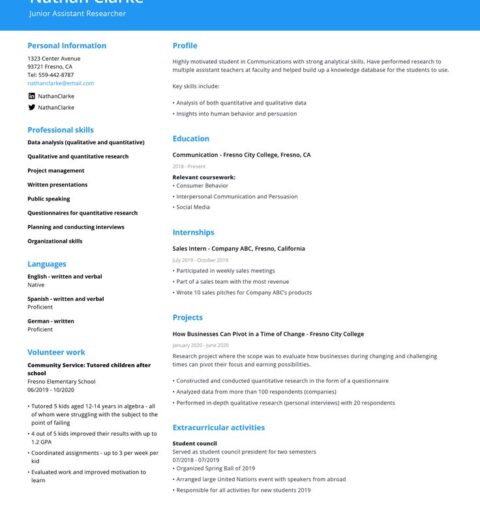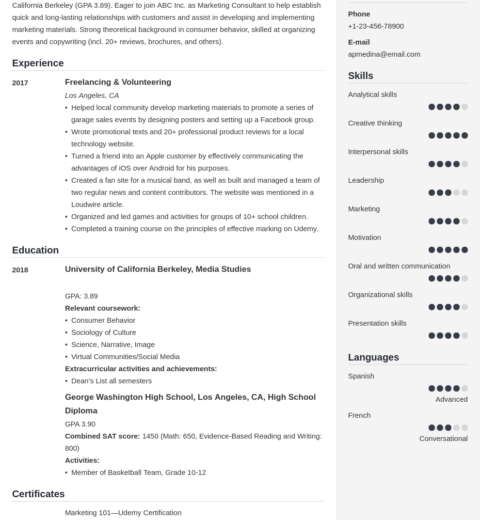In an era characterized by relentless technological advancement and evolving workforce expectations, envisioning the optimal resume for 2025 warrants a more intricate analysis than ever before. A resume is no longer just a document; it is akin to an artist’s canvas, upon which candidates paint their professional narratives. To navigate this evolving landscape, one must embrace the uniqueness of their journey while adapting to the shifting demands of the employers.
At the heart of a good resume lies the concept of personalization. By the year 2025, employers are expected to increasingly appreciate resumes that reflect authenticity and individuality. Generic templates are becoming relics of the past; hiring managers are yearning for bespoke documents that encapsulate a candidate’s personality, values, and specific skill sets. This personalization should not be merely superficial; it should resonate on a fundamental level with the intention behind each chosen word and design element.
To craft a compelling resume in this new age, formatting will play a pivotal role. Visual hierarchy becomes paramount. Candidates should utilize a layout that is both aesthetically pleasing and easy to navigate. Think of it as structuring a fine piece of literature. The top third should act as a captivating prologue, showcasing the candidate’s name, contact information, and a succinct yet impactful professional summary. Here, job seekers have merely a few seconds to grab the reader’s attention. A touch of creativity in typography can separate a mediocre resume from a memorable one.
Integral to this era’s resumes is the judicious incorporation of technology. As artificial intelligence (AI) continues to influence hiring practices, candidates must optimize their resumes for ATS (Applicant Tracking Systems). This means using relevant keywords that mirror job descriptions without resorting to keyword stuffing, which can dilute the essence of the content. The fine balance lies in promoting one’s attributes while speaking the language of machines that rank candidates before human eyes even see the document.
An engaging resume in 2025 should also encompass quantifiable achievements. Rather than simple job descriptions, candidates should craft narratives around their accomplishments. Employing metrics—numbers, percentages, and data points—will create a more compelling story. For instance, instead of stating “managed a team,” one might say, “led a cross-functional team of ten to achieve a 30% increase in productivity over six months.” Using that figurative brush to illustrate achievements connotes not just skills but results, which speaks volumes to potential employers.
Moreover, the inclusion of a “Skills Matrix” can serve as an intriguing aspect of contemporary resumes. In a world where transferable skills reign supreme, presenting these competencies visually—perhaps in the form of graphs or charts—can add an original touch while conveying crucial information at a glance. Such graphical representations not only draw the eye but also simplify the assimilation of information, allowing potential employers to quickly gauge the versatility of the candidate.
As we delve further into the unique appeal of 2025 resumes, the element of storytelling emerges as a significant thread. Candidates should consider infusing their resumes with a narrative that reflects their career trajectory, emphasizing how past experiences have shaped their present capabilities. The journey metaphor resonates well here: a resume should be seen as a map, guiding the reader through the professional milestones, challenges faced, and lessons learned. Such storytelling cultivates an emotional connection between the candidate and the reader, making the resume stand out amid a sea of text.
Furthermore, supplements to the traditional resume can enhance its allure. Candidates can incorporate links to digital portfolios, personal websites, or even relevant social media profiles. In this digital age, a resume is not confined to paper; it can be a dynamic representation of a candidate’s persona. A well-curated online presence can complement the resume, offering potential employers a deeper insight into professional accomplishments and personal values.
In 2025, visual elements will become prevalent in resumes. Candidates might choose to add infographics or subtle design elements that align with their professional field. For example, a creative professional may leverage their artistic prowess by integrating unique color palettes or illustrative icons, whereas a candidate in a more conservative field might adhere to a classic look. Balancing creativity and professionalism encapsulates the essence of a good resume.
In light of the global shift towards inclusivity and diversity, reflecting this ethos within resumes is gainfully important. Candidates should consciously indicate their adaptability and the inclusive nature of their work history, thereby weaving diversity into their professional narrative. This might include highlighting collaborations with diverse teams or initiatives aimed at promoting inclusion. Such nuances not only enhance the narrative but also align with contemporary organizational values, rendering candidates more appealing.
In conclusion, a good resume in 2025 transcends traditional boundaries, evolving into a multi-faceted document that serves as a potent marketing tool for one’s professional brand. The fusion of personalization, technology, storytelling, and visual appeal—each interwoven with authenticity—creates a distinctive aura around a candidate. Embracing these aspects will ensure that job seekers not only capture attention but also leave a lasting impression on prospective employers. As we stand on the precipice of this new age, understanding and applying these unique elements will be the cornerstone of a successful job application process.




